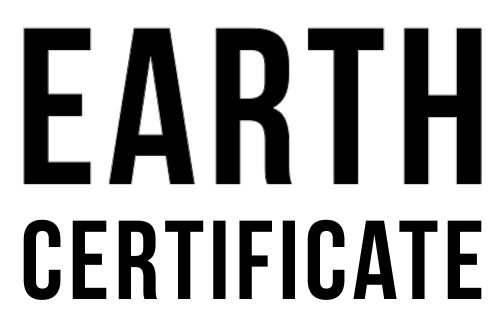Why Bio, Organic, and Vegan Labels Fail

For decades, Bio, Organic, and Vegan labels have served as trusted symbols of responsible, ethical, and environmentally conscious products. These certifications promised purity, humane practices, and sustainable production methods, reassuring consumers about the safety and integrity of their purchases. However, in today’s complex landscape of advanced materials, globalized supply chains, and heightened consumer awareness, these labels are increasingly outdated and inadequate. Modern production involves sophisticated chemicals, nanotechnology, and intricate supply chains that traditional certifications were never designed to address. Below, we explore the critical gaps in these legacy labels and propose a forward-thinking solution: the Earth Certificate ID.
1. Hidden Chemical Contaminants
Traditional Bio, Organic, and Vegan certifications focus primarily on verifying the absence of synthetic pesticides, genetically modified organisms (GMOs), or animal-derived ingredients. While these are important, they fail to address the modern chemical realities of production, packaging, and processing.
-
PFAS and “Forever Chemicals”: Per- and polyfluoroalkyl substances (PFAS), often dubbed “forever chemicals,” are widely used in food packaging (e.g., grease-resistant wrappers), non-stick coatings on processing equipment, and even in textiles for agricultural covers. These compounds are persistent, taking centuries to break down in the environment, and can bioaccumulate in humans, potentially leading to health issues like hormonal disruption or increased cancer risk. Traditional certifications do not test for PFAS, leaving consumers unknowingly exposed.
Example: A 2023 study by the Environmental Working Group found PFAS in organic-certified packaged foods, highlighting contamination from processing or packaging materials not covered by organic standards.
-
Industrial Solvents and Additives: Even organic production may involve solvents (e.g., hexane in soy oil extraction) or stabilizers that are not disclosed under current certification frameworks. These substances can leave trace residues in the final product, undermining the “pure” promise of organic labels.
Example: Hexane, a neurotoxic solvent, is permitted in some organic processing under U.S. standards, yet it is not explicitly disclosed to consumers.
-
Pesticide Residues and Cross-Contamination: Organic standards prohibit synthetic pesticides, but residues from neighboring non-organic farms, contaminated water sources, or shared storage facilities can still taint organic products. Soil and water retain pesticide residues for years, and traditional certifications rarely require comprehensive residue testing beyond initial compliance.
Example: A 2021 European Union report found that 2% of organic produce contained detectable pesticide residues due to environmental cross-contamination, raising questions about the reliability of organic claims.
Earth Certificate ID Solution: Every certified product undergoes rigorous chemical testing using advanced analytical methods, such as liquid chromatography-mass spectrometry (LC-MS), to detect PFAS, industrial solvents, pesticides, and other persistent compounds. Testing extends beyond ingredients to include packaging and processing equipment, ensuring no hidden contaminants compromise product safety. Results are transparently reported via a digital Eco ID, empowering consumers with verifiable data.
2. Nanomaterials and Advanced Compounds
The rise of nanotechnology in food, cosmetics, and textiles introduces new challenges that traditional labels completely overlook. Nanoparticles, graphene, and other engineered materials are increasingly used to enhance shelf life, improve texture, or enable smart packaging with traceability features.
-
Unregulated Nanotechnology: Nanoparticles, such as titanium dioxide in food additives or silver nanoparticles in packaging, can be as small as 1-100 nanometers. Their small size allows them to penetrate biological barriers, potentially leading to unintended health effects, such as cellular damage or bioaccumulation in organs. Traditional certifications have no protocols for detecting or regulating nanomaterials.
Example: Nano-titanium dioxide, used as a whitening agent in some organic candies, has raised concerns in studies for potential toxicity, yet it remains unaddressed by organic standards.
-
Environmental Risks: Nanomaterials can persist in ecosystems, potentially disrupting soil microbiomes or aquatic life. Their long-term environmental impact is poorly understood, and traditional labels do not require manufacturers to assess or disclose their use.
Example: Silver nanoparticles in vegan cosmetics can wash into waterways, harming aquatic organisms, yet vegan certifications focus solely on animal-free ingredients, ignoring these broader impacts.
Earth Certificate ID Solution: Certification includes mandatory nanomaterial screening using techniques like electron microscopy and dynamic light scattering to identify and quantify nanoparticles. Products must disclose nanomaterial use, and their safety is evaluated based on the latest scientific research. This ensures consumers are informed about cutting-edge materials and their potential risks, while manufacturers are held accountable for environmental responsibility.
3. Lack of Supply Chain Traceability
Traditional Bio, Organic, and Vegan labels typically verify only the final product or its primary ingredients, leaving the supply chain opaque. This limited scope opens the door to fraud, greenwashing, and ethical lapses.
-
Unclear Origins: Consumers have no way of knowing where raw materials were sourced or whether they were produced sustainably. For example, organic coffee may be certified based on its final composition, but the beans’ journey from farm to cup—through multiple countries, processors, and storage facilities—remains untracked.
Example: In 2019, a major organic grain scandal in the U.S. revealed that imported grains labeled as organic were fraudulently certified, with no traceability to verify their origins.
-
Greenwashing Risks: Without full supply chain visibility, companies can exaggerate or falsify their sustainability claims. For instance, a vegan leather product may be certified animal-free but sourced from factories with environmentally harmful practices or unethical labor conditions.
Earth Certificate ID Solution: Every product receives a unique Eco ID, a blockchain-based digital identifier that maps the entire supply chain from raw material extraction to final sale. This includes details on farming practices, transportation methods, storage conditions, and processing facilities. Consumers can scan the Eco ID to access a transparent, tamper-proof record, ensuring authenticity and exposing any weak links in the chain.
4. Limited Environmental Accountability
While Bio and Organic labels emphasize production methods (e.g., no synthetic pesticides), they often ignore the broader environmental footprint of a product’s lifecycle. Vegan labels, meanwhile, focus solely on animal-free ingredients, neglecting other ecological impacts.
-
Carbon Emissions: Global supply chains involve significant transportation, often by air or sea, contributing to high carbon emissions. Traditional certifications do not account for these impacts.
Example: Organic avocados shipped from South America to Europe can have a carbon footprint equivalent to several kilograms of CO₂ per fruit, yet the organic label implies environmental responsibility.
-
Water Consumption: Farming and manufacturing can be water-intensive, particularly for crops like almonds or cotton. Traditional labels rarely assess water usage or efficiency.
Example: Organic cotton, while free of synthetic pesticides, can still require thousands of liters of water per kilogram, straining local water resources in arid regions.
-
Waste and Circularity: Certifications do not evaluate waste generation or whether products and packaging align with circular economy principles, such as recyclability or biodegradability.
Earth Certificate ID Solution: Certification includes a comprehensive environmental audit, calculating the product’s carbon footprint (using lifecycle assessment tools), water usage, and waste generation. Manufacturers must demonstrate efforts toward circularity, such as using compostable packaging or recycling programs. These metrics are included in the Eco ID report, giving consumers a holistic view of the product’s environmental impact.
5. Ethical and Social Oversight Gaps
Traditional certifications rarely extend beyond ingredient or production method verification to address the human element of supply chains.
-
Labor Conditions: Farmworkers, factory employees, and suppliers in developing countries often face exploitative conditions, including low wages, long hours, or unsafe workplaces. Bio and Vegan labels do not require labor audits.
Example: Organic cocoa farms in West Africa have been linked to child labor, yet the organic certification does not mandate social responsibility checks.
-
Supplier Compliance: Subcontractors and secondary suppliers may engage in practices that conflict with ethical standards, such as deforestation or community displacement, without scrutiny from traditional certifications.
-
Community Impact: Certifications rarely consider whether production benefits or harms local communities, such as through land use conflicts or economic exploitation.
Earth Certificate ID Solution: Every certified product undergoes ethical audits, conducted by independent third parties, to verify fair labor practices, safe working conditions, and compliance with international standards like the ILO conventions. The Eco ID includes a social responsibility score, detailing supplier integrity and community impact, ensuring that ethical claims are substantiated.
6. Fragmented and Outdated Standards
The landscape of certifications is a patchwork of varying standards, creating confusion for consumers and opportunities for exploitation by brands.
-
Inconsistent Criteria: Organic standards differ significantly between countries (e.g., USDA Organic vs. EU Organic) and certifying bodies, leading to inconsistencies in quality and trustworthiness.
Example: Some countries allow certain synthetic additives under their organic standards, while others do not, leaving consumers puzzled about what “organic” truly means.
-
Paper-Based Inspections: Many certification agencies rely on outdated, manual inspection processes rather than leveraging modern data-driven or scientific validation methods, increasing the risk of oversight or fraud.
Earth Certificate ID Solution: Earth Certificate ID establishes a unified, global standard that harmonizes requirements across borders. Certification is supported by digital tracking and lab-based validation, using technologies like IoT sensors and AI-driven data analysis to ensure accuracy and consistency. This modern approach replaces fragmented, paper-based systems with a transparent, scalable framework.
7. Consumer Trust Erosion
As consumers become more aware of modern risks—PFAS contamination, nanomaterials, greenwashing, and ethical lapses—they are growing skeptical of traditional labels. Without rigorous, data-backed transparency, Bio, Organic, and Vegan certifications struggle to maintain credibility.
-
Lack of Verifiable Data: Consumers cannot access detailed evidence behind certification claims, forcing them to rely on trust rather than proof.
Example: A 2024 consumer survey by YouGov found that 65% of respondents distrusted organic labels due to perceived greenwashing and lack of transparency.
-
Evolving Expectations: Today’s consumers demand more than just ingredient purity; they want assurance of safety, sustainability, and ethical integrity across the entire product lifecycle.
Earth Certificate ID Solution: Each Eco ID links to a comprehensive digital report, accessible via a QR code or online portal, providing:
- Lab results for contaminants, PFAS, and nanomaterials
- Full supply chain traceability, with geolocation and process details
- Environmental metrics, including carbon footprint and water usage
- Ethical compliance data, including labor and community impact
- Real-time certification status, verified by independent labs
This transparent, data-driven approach restores consumer confidence by allowing anyone to verify claims instantly.
Conclusion
Bio, Organic, and Vegan labels were groundbreaking in their time, setting a foundation for responsible consumption. However, they are now outpaced by the complexities of modern production, from chemical contaminants and nanomaterials to global supply chains and evolving consumer expectations. These legacy certifications fall short in addressing hidden risks, ensuring traceability, and providing holistic environmental and ethical accountability.
The Earth Certificate ID redefines certification for the 21st century. By integrating advanced chemical testing, nanomaterial screening, blockchain-based supply chain mapping, comprehensive environmental audits, and rigorous ethical oversight, it offers a science-based, transparent, and globally standardized solution. Consumers gain access to verifiable data through a unique Eco ID, empowering them to make informed choices. Brands benefit from enhanced credibility, and regulators gain a reliable framework to enforce sustainability and safety standards. Earth Certificate ID is not just an evolution of certification—it’s a revolution, ensuring that products truly align with the values of safety, sustainability, and ethics in a complex world.

